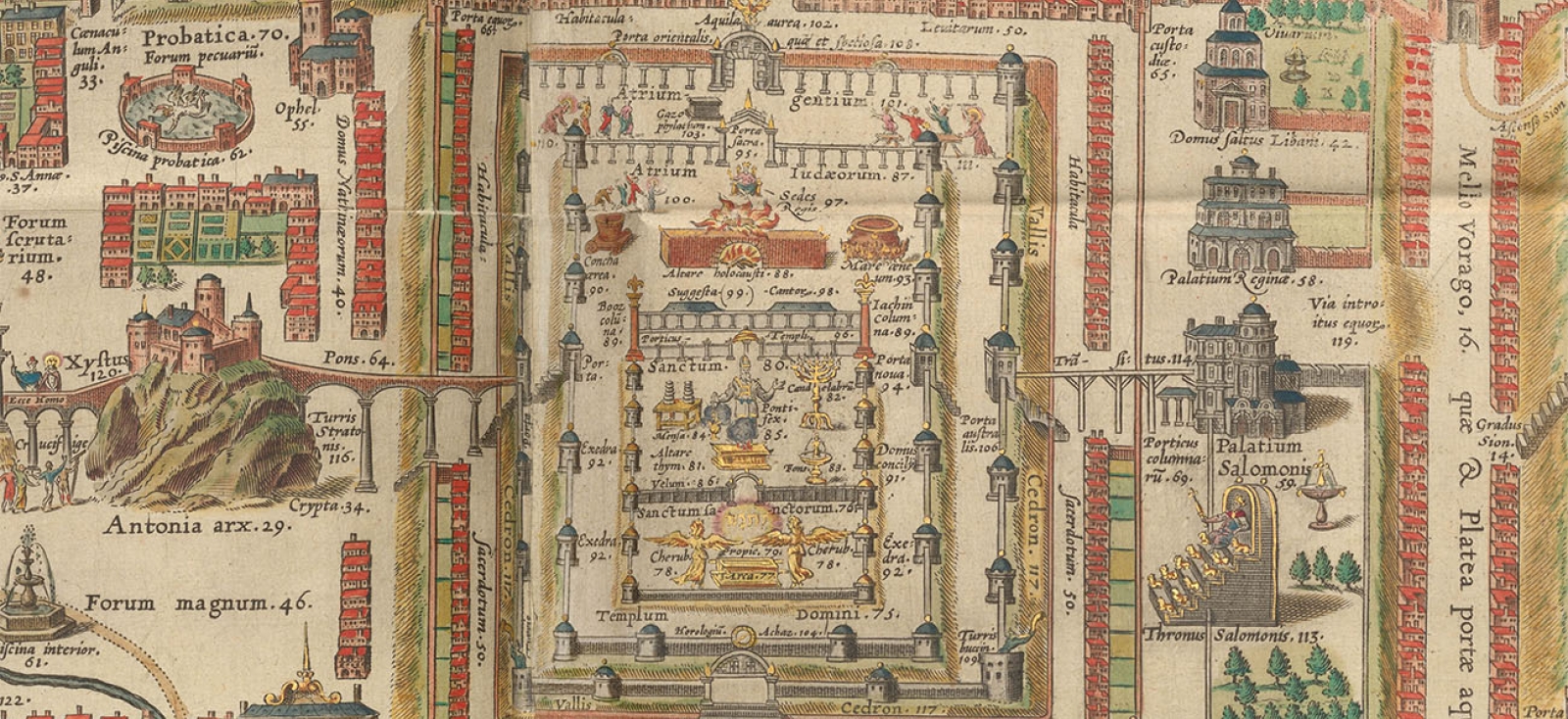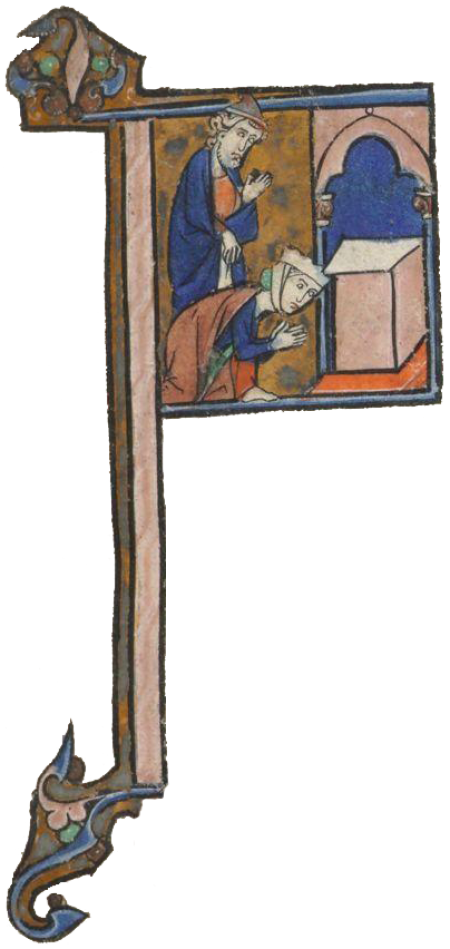
The Riant collection at Houghton represents the bulk of the library of Paul Édouard Didier, comte de Riant (1836-1888), influential scholar of Scandinavian expeditions to the Holy Land. The Riant collection broadly documents European involvement in the Middle East, with a focus on Western European materials and perspectives.
The collection has particular strengths in the following areas:

- The Crusades and their aftermath, including Christian pilgrimage to the Middle East
- Military religious orders, including the Knights of Malta, Teutonic Knights, and Knights Templar
- Archeology and geography of the Holy Land
- Rise and fall of the Ottomans
Researchers can explore these topics through a range of academic, religious, and fictional genres, including poetry, bibliographies, novels, chronicles, sermons, and correspondence.
Notably, the collection includes over 100 manuscripts that date from the 12th through 19th centuries. The bulk of these manuscripts were produced before 1600. These are primarily religious texts, including a 12th-century copy of the Gospels (MS Riant 20) and liturgical books (such as MS Riant 9, from which the initial at right is taken).
Autobiographical and fictional works, some written by laypeople, are also among the Riant manuscripts. These include, for example, a pilgrimage account of a woman travelling from Belgium to Jerusalem in the mid-17th century (MS Riant 77) and a French-language copy of Sir John Mandeville's Travels, which details a fictional English knight's journey to the Holy Land in the 14th century (MS Riant 50).
The Riant collection also includes over 100 incunables (early books printed before 1501), one of which is the only known surviving copy: Paolo Marsi’s Lamentatio de crudeli Eurapontinae urbis excidio (Venice, 1471?).
If you are interested in a comprehensive overview of all materials in the Riant collection at Harvard, please consult volumes 2 and 3 of the printed catalogue.
Collection history
In addition to his work on Scandinavian expeditions to the Holy Land, Paul Édouard Didier, comte de Riant, organized the Société de l’Orient Latin, which supported the publication of studies, major translations, and bibliographies related to Middle Eastern studies.
Over the course of his career, Riant assembled a large library. Its three-volume catalogue, compiled for the sale of the library after Riant’s death, lists nearly 8000 items. Yale University acquired the materials described in the first volume devoted to Scandinavia. Thanks to the generosity of Archibald Cary Coolidge (Class of 1887 and later professor of history) and his father J. Randolph Coolidge, Harvard was able to purchase the remaining two-thirds of the library in 1899.
For more on the history of the collection, see this article in the Harvard Library Bulletin.
Related collections
For the Riant collection on Scandinavia at Yale University, see volume 1 of the printed catalogue to Riant’s collection.
Accessing These Materials
All material is accessible through Houghton Library’s reading room.
Manuscripts in the Riant collection begin with shelfmark ‘MS Riant’. You can browse these here in HOLLIS, Harvard’s online catalog.
Most (but not all) of the printed materials in the Riant collection have ‘Riant, comte (Paul Édouard Didier)’ listed as a former owner in their catalog record. You can browse this selection of printed books via this HOLLIS search. If any of these items is fully or partially digitized, the catalog record will include a link to the digitized version.